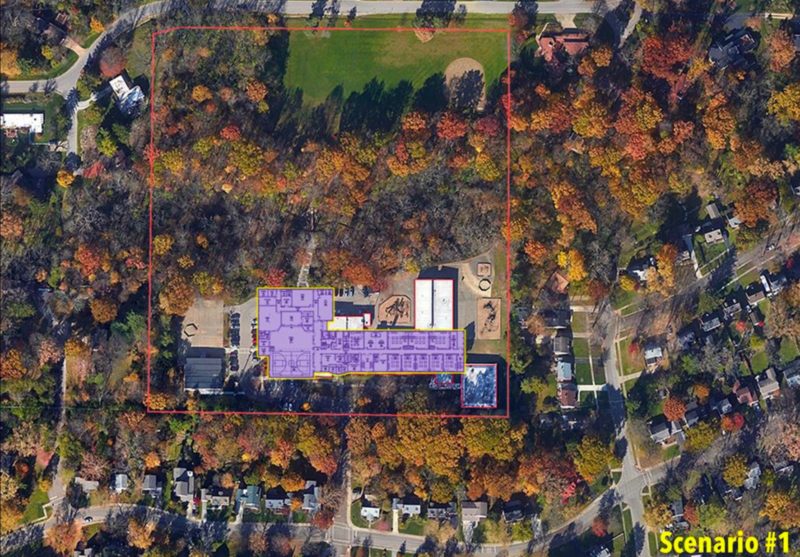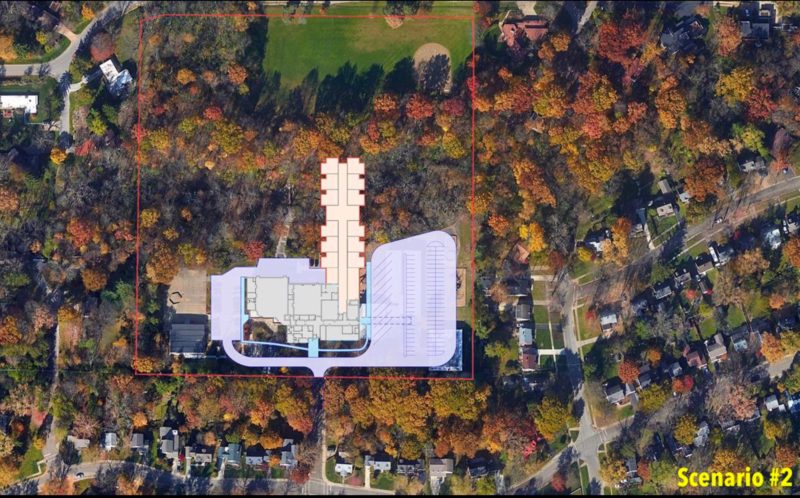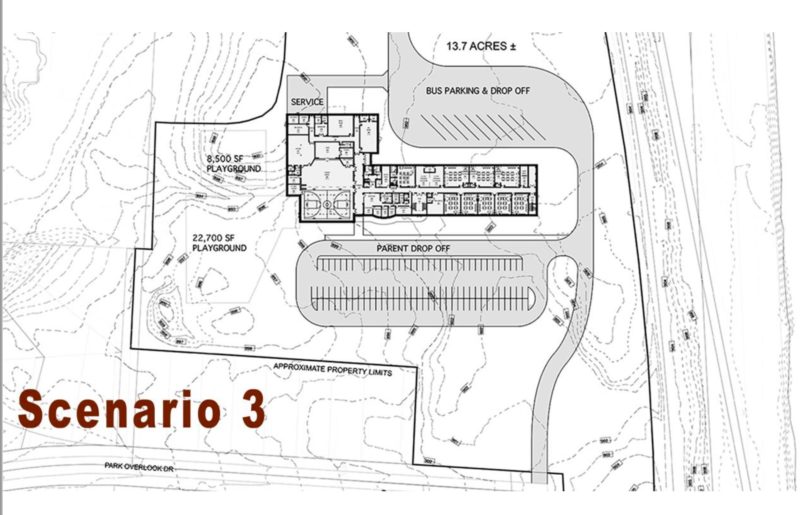Colonial Hills Elementary: Six Questions for the BOE meeting, 4.27.20

As a parent of two kids who attend Colonial Hills Elementary (grades 2 and 3), I’ve been closely following the discussions about a possible relocation of their school. I’ve sent a set of questions (below) to Worthington Board of Education members in anticipation of their meeting on Monday, April 27, where the topic will be on the agenda. The location of the school, and the future of the wooded ravine and south field, will have big impacts on Rush Creek Village, Colonial Hills, and the city at large. You can check out the BOE proceedings here: https://www.worthington.k12.oh.us/Page/3155. For persons familiar with the current location these questions of mine will hopefully make sense (I’ve put three screenshot images below for Scenarios 1, 2, and 3). For those not familiar, I’ll try to provide context in a future post as decision points are approached. I would encourage others in the community to email your own questions/comments to the Board (before noon on Monday, 4/27/20) here: wscomms@wscloud.org
Dear Worthington Board of Education,
Regarding the issue of Colonial Hills Elementary School:
- Is there any positive valuation being given the wooded ravine as an educational asset? And I mean “education” in both a programmatic sense and as simple “play.” If so, how is this valuation figuring in to your decision-making process? Richard Louv’s Last Child in the Woods speaks to our society’s “nature deficit disorder,” and its relationship to a range of childhood ailments, both physical and psychological. I urge this issue to be explicit and integral to your process.
- Is there any positive valuation being given to the fact that the current location is at the very center of the neighborhood it primarily serves, while the alternative site at Boundless is in the far northeast corner of the community? How does the issue of location figure in to your thinking, in terms of walkability, sense of belonging, and general embeddedness in the community? If moved to Boundless, what would the impact be on walkability and drive times? Traffic in, out, and through Colonial Hills?
- Is there any positive valuation being given to the historic aspect of the current building (built mid-1950’s)? Mid-century architecture is not my personal favorite, but I recognize that what we may take for granted today, or even view dismissively, may in a decade or two be recognized as a valuable, irreplaceable part of a community. I think the existing building harmoniously relates to, and reinforces, the sense of place and aesthetic of the Colonial Hills community. Is there any positive valuation given to this factor?
- Can we consider an option #4? (Option #1 is a viable idea, but Option #2, with its sprawling parking lot and building straddling the ravine, doesn’t look like a serious proposal). Renovate current building, build additional space (one or two stories) where current modular units are located. It seems to me that student capacity is not the issue since 2019-20 enrollment is ≈ 440 and current capacity is ≈ 570 (this includes the modular units, which increased capacity by ≈ 95). If new building were enlarged (to two stories?), capacity could exceed the 600 goal.
- Is the cost of Boundless land acquisition being included in your Rough Cost Comparison?
- If the school is moved to Boundless, what would happen to the current property (the building site, the ravine, the south field)? What conceivable uses would be acceptable if not desirable for the Rush Creek and Colonial Hills communities? I believe responsible stewardship needs to squarely consider secondary effects early, not late, in the decision-making process.



You must be logged in to post a comment.